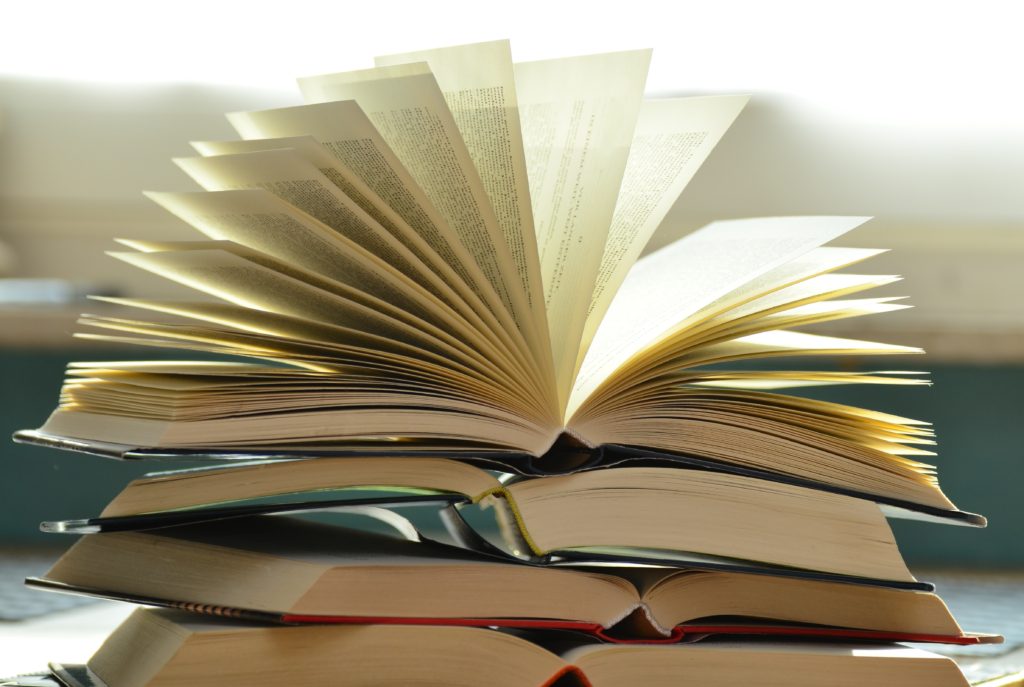
A new school year begins in just a couple of weeks! That means it’s time to post about what we are doing this year, and how we are doing it! This year, I have a 9th grader, 7th grader, 4th grader, 2nd grader, and kindergartner. Also, I have a 4yo and a 2yo. And, I am pregnant. The baby is due at the end of 2019. So, newborn in the middle of our school year. With so much going on, it becomes ever more important to maintain a minimalist approach to homeschooling. That said, here is our minimalist homeschool curriculum for 2019-2020.
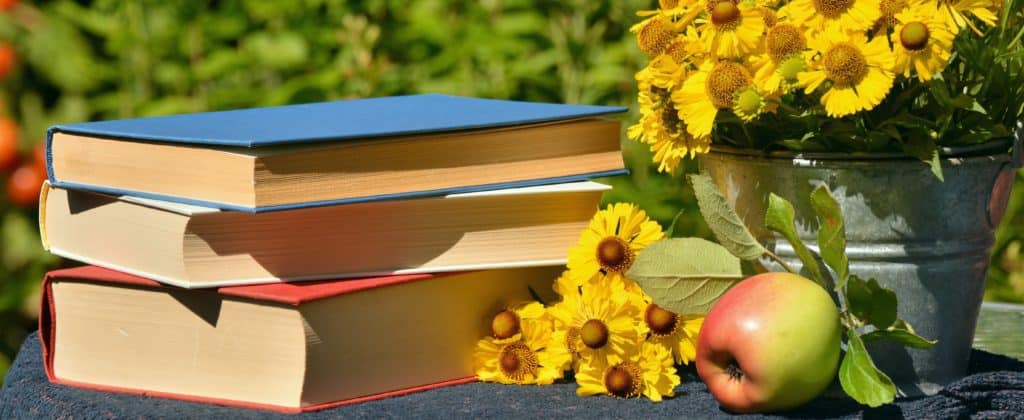
Back-to-Basics
We take a back-to-basics approach to homeschooling, and focus on mastery of math, reading, and writing. We use Robinson Curriculum as the basis of our homeschool, which focus entirely on reading, writing, and math. It has the best approach to science, which is to teach physics and chemistry as calculus-based extensions of math. All other science is taught through reading living books, and, if the child is interested, through observing and collecting natural objects, star-parties, gardening, and animal husbandry.
History and geography are also learned from reading living books. Basically, the curriculum is 1-2 lessons from Saxon Math first thing in the morning. Then the child corrects their work. After math, they write a page or so. Usually, they do copywork until about 6th grade, and by high school, they are writing 2 pages a day. Finally, they read for a couple of hours. After that, they can pursue their other interests. The curriculum is excellent, because it emphasizes skill practice, the content is found in reading living books, and it leaves plenty of time for interest-led learning. It teaches independent learning, and self-reliance. It also doesn’t require me to spend all my time planning and teaching. I have time for babies, toddlers, preschoolers, teaching my beginning learners, cooking three meals a day, doing all the housecleaning, and disciplining.
I also appreciate that Robinson Curriculum doesn’t address religion. It is Christian-based, and it includes unashamedly Christian reading, including the 1611 King James Version Bible. BUT! Religion is part of family culture. It is part of connecting your family to your culture and your community. In our house, using this curriculum allows us to choose our own catechism for religious instruction, our own holidays and celebrations, and our own family traditions. I can teach my children etiquette and work on character training, without it conflicting with our curriculum.
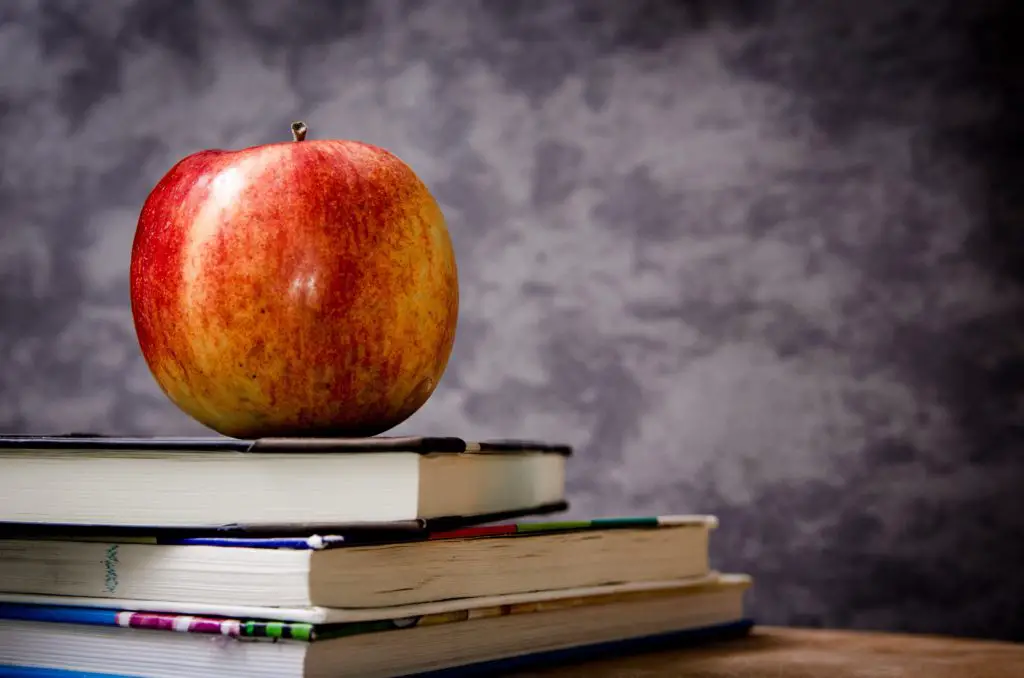
How We Do Minimalist Homeschool
In our state, there is an hourly requirement, and a requirement to study certain subjects as homeschoolers. I prefer a minimalist homeschool curriculum. So, for our minimalist homeschool curriculum for 2019-2020, I have a complete set of math books, pencils and composition books, and a booklist from the Robinson Curriculum. I divide up the booklist into subjects, and I also include supplementary reading that we need to cover. But, I keep the curriculum to be about reading, writing and math. In middle school and high school, we have to add a foreign language, state history, and career readiness for graduation. We also have to do P.E./ health and arts, but we cover those as part of things to do every day.
All the work is done in old-fashioned composition books. Math is done in graph paper composition books. Writing and notebooking are done in regular, college-lined composition books. In addition to a copywork or writing book, they learn to keep a field journal, commonplace book, and Book of Centuries. Starting in middle school, the student begins writing information from reading in a field journal (nature, science, and engineering), a Book of Centuries (timeline of history with illustrations and maps), and a commonplace book (quotes and feelings about stories and books). Each student practices map drawing every day from 3rd grade on, until he can draw the world and label features and locations from memory.
We all meet together for 15-30 minutes at the beginning of the school day. We recite the Pledge of Allegiance and the 23rd Psalm. Each child learns to “speak pieces” from the McGuffey’s Readers and recites their current piece. We go over the catechism question-and-answer memory work. Other memory work is also recited. Then everyone goes to their individual work.

Middle and High School
So, the 7th and 9th graders are totally self-directed. At 8:30, after doing their morning routines and chores, they collect their school things and start working. The only thing that I do for them is correct their writing. They start with math, then move on to English grammar and spelling/vocabulary. Then, they write for about an hour. Both of them are still working on content, rather than form. They are both studying Latin this year, so after writing, they take 30 minutes to study Latin together, then take a break for the noon hour (which is not RC, but is good for our family). After lunch, they do reading. The last part of reading time, they notebook their reading. Finally, they have 30 minutes to study civics, home ec, and business, which qualifies as career readiness.
As you can see, in middle and high school, my kids are entirely self-directed. They don’t use screens, just pen, paper, and books. They have access to atlas, dictionary, globe, encyclopedia, and field guides and they know how to find information and put it in their own words. THAT is the value of Robinson Curriculum!
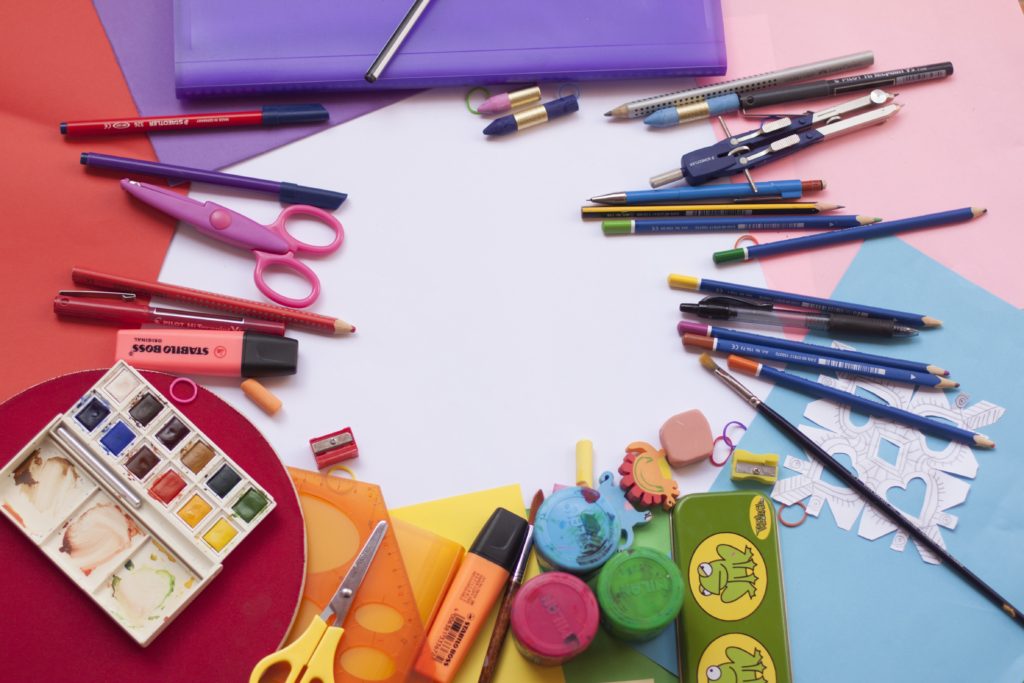
Elementary School
There are two different levels of elementary school. There is 1st and 2nd grade, where children are learning to read, learning to write, and learning their math facts. Then, there are grades 3-6, where they are practicing reading, writing, and math. I also teach kindergarten, but I don’t use a curriculum, just a set of objectives, and flash cards, pattern blocks, classic read-alouds, and the Wee Sing series.
Upper Elementary Grades
In 3rd-6th grades, most of the work is reading and math. Students draw or copy a map for five minutes a day after they finish their reading. They make rock, bug, or pressed plant collections. They read G. A. Henty, Horatio Alger, Rudyard Kipling, and others. In 3rd and 4th grade, they do copywork instead of original writing. In 5th and 6th grade, they start learning how to put original thoughts on paper. They study spelling, vocabulary, and grammar from old-fashioned schoolbooks. And, they do a lesson from Saxon Math every day. If Saxon Math doesn’t work for them, they can choose Ray’s Arithmetic. Both are great programs, and both are self-teaching. The self-teaching aspect is a benchmark for any resource included in our minimalist homeschool curriculum for 2019-2020, since I am pregnant this year.
Early Grades
In 1st and 2nd grades, the emphasis is on the basics of literacy. I teach phonics from an old-fashioned speller. I like Webster’s Speller because I prefer to use a syllabary, although the method also works with McGuffey’s Speller. In kindergarten, children learn the names of the letters and their sounds. In 1st grade, they begin the syllabary. After they get through the syllabary, or in the first few lessons of McGuffey’s Speller, they start McGuffey’s Primer. Every day, we go over the spelling tables or lessons, recite the spelling rule, speak and spell out loud, then turn to McGuffey’s Primer and First Reader.
After phonics and spelling practice, it is time for McGuffey notebook pages. For these, we go over the Primer or First Reader lesson, sounding out the words. Then she copies the letters and words into a composition notebook. I demonstrate each letter, and she writes rows of them for practice. She learns them in the same order as the lessons. By the time she gets through the First Reader, she can write a full page of copywork at a time, ready for 3rd grade.
Finally, she also memorizes all her math facts. Addition, subtraction, multiplication, and division, through 12. We use Ray’s Primary Arithmetic to connect math to life, but the core of math learning is memorizing math facts. Until math facts are memorized, we don’t really write problems, we just do word problems orally from Ray’s Primary Arithmetic.
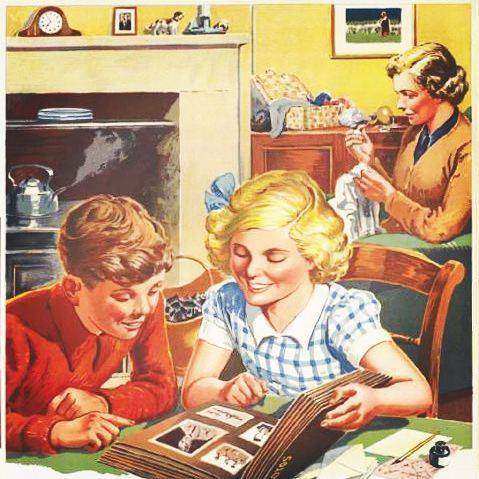
How We Do Life Skills for Our Minimalist Curriculum
During the school year, we follow a strict schedule, but allow time for individual pursuits. The children have chores. They are responsible for their own rooms, for their own things, and for taking turns helping me cook and clean up afterwards. The older ones also help in the garden, with the chickens and other farm animals, and with other outdoor chores. I keep a list of life skills that I want them to learn, which includes household skills, outdoors/survival skills, old-fashioned skills, and crafts.
I also keep a list of etiquette from an old-fashioned etiquette books, of manners I want my kids to learn. During the year, we work on manners every week. Table manners, manners in public, greetings, polite conversation — Hopefully by the end of the year, I will have covered it all. For my teens, I include weekly lessons from vintage home ec books, vintage style & beauty books, and vintage etiquette books, along with the weekly civics and business lessons. They get embarrassed, but I know that the weekly practice of the same concepts over and over will make it easier for their social skills to be natural later on.
Oh, and I should mention that my kids wear uniforms for homeschool! They are part of their simplified wardrobes. Clothing care skills are part of their life skills list. Life skills are an important part of our minimalist homeschool curriculum for 2019-2020. I only have a couple more years with my teenagers!
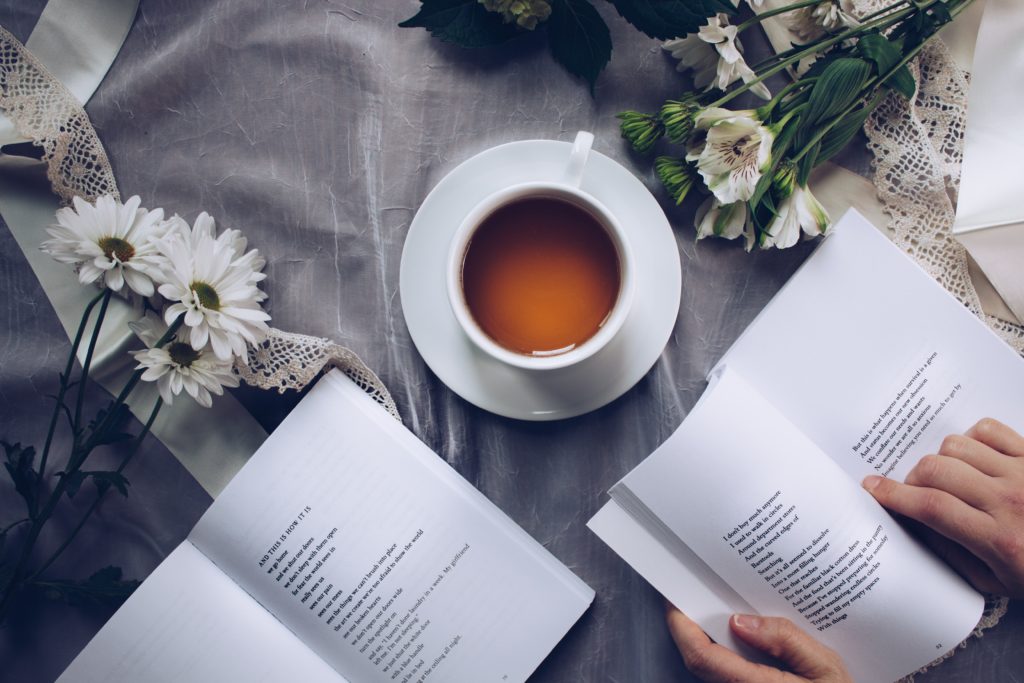
Scheduling
This year, in spite of this pregnancy, I am trying to keep up with my 1950s Mom Schedule. I planned everyone’s schedule, and compiled them on a Daily Family Schedule. I also wrote out detailed individual schedules, so each person knows what they should be doing. We are currently following them, except for the school-day part, to get in the habit and identify problems before school starts.
Now that the schedules are written, I am going to write out lesson plans for the school year. My method of planning lessons follows this one pretty closely. (Her whole site is fantastic!) The only real difference is that I do all my planning and record-keeping in bound notebooks. Even the kids’ assignments are composition book checklists.
Once the schedules and lesson plans are complete, it will be time to write down my cleaning system and my meal planning system, so that everything is laid out in writing. Any time that I am going to have a baby during the school year, I like to have everything written out. Partly, it’s because remembering everything for everybody takes SO MUCH ENERGY. Partly, it’s so someone else can step in and supervise the schooling, housekeeping, and meals if there are complications.
So, that’s the plan for the school year. It may not seem like a minimalist homeschool curriculum for 2019-2020, but the education part of it is certainly simple! As for the rest — life is never simple, even when it is minimalist, when you are a 1950s mom and homeschool housewife with 7 children and a husband! Is there anything else you’d like to know about? Leave a comment with anything you want to know more about, and I will try to get back to you!
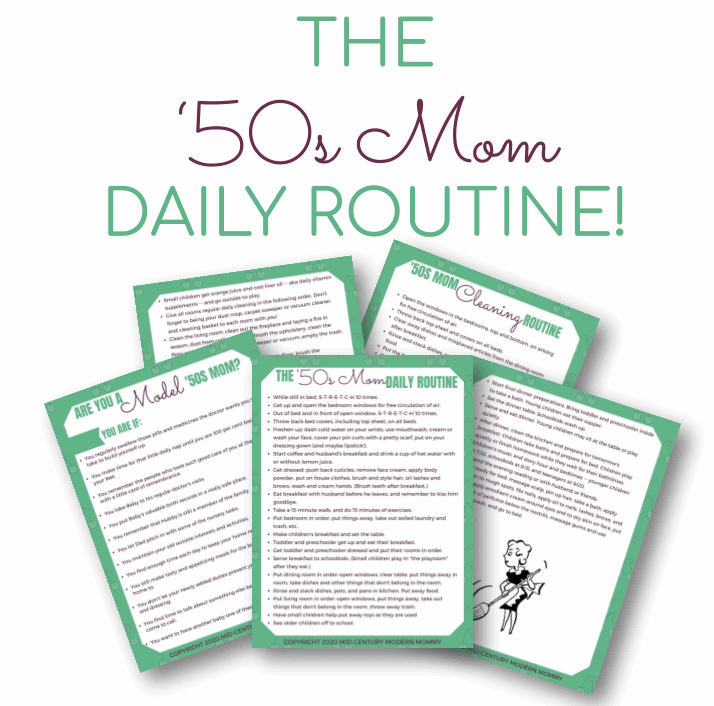
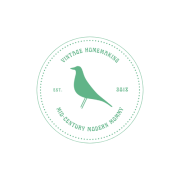
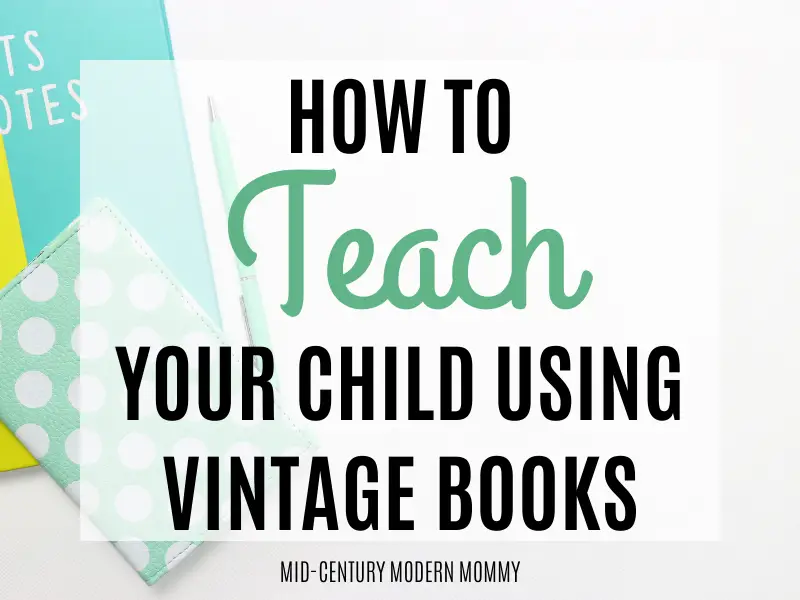
Wow. I recently found your blog and think it’s wonderful. I am a homeschool mom to 3 kids (11, 9, and 4). I feel like I am spinning my wheels everyday. I so want to be a better home manager and serve my family better. I would love to see how your day plays out. How does cooking, laundry and cleaning like a 50s housewife fit into your homeschool day? I am struggling balancing it all. I am impressed with how well you seem to manage it all. We don’t use Robinson curriculum (although I am intrigued by it). We use a combo of CLE, Abeka, Rod and Staff, Easy Grammar and reading lists I have created. Also, what type of meals do you cook? What do your kids eat for breakfast and lunch? I get in such a slump trying to meal plan 3 meals a day. I would love to hear more. Thanks!
Part of how I manage it so well is scheduling! I make a daily schedule for each kid, and for myself. I also make detailed lists for morning routines, afternoon routines, evening routines, chore systems, and lesson procedures. I made my 1950s Mom Daily Routine as a list of all the things I work into my day, and I have a schedule that lays it all out by half-hour segments. Part of how I get so much housework done is that I use Robinson Curriculum. I schedule more time than I need for my housework during schooltime, and while I am working or cooking, I can make time here and there to supervise littles or teach for a few minutes.
In addition to vintage step-by-step lists (things go faster when I don’t have to think about what’s next, I can just read it), I also use mostly vintage menus. It doesn’t feel like dinner without hot rolls, salad, and dessert! My breakfast and lunch menus rotate, and are also vintage. My dinner menus are more seasonal. I mostly use the vintage menus for dinner, and I substitute in family favorites, on-sale meats, and seasonal veggies. I love my vintage resources mostly because when I start to plan NOTHING EVER HAPPENS! I spun my wheels for years before I realized that having a step-by-step plan laid out for me and already set up for good efficiency lets me work the plan, THEN tweak the plan. I have confidence that it is already pretty good and I don’t get decision fatigue!
If you want to see more of my schedules, I have them in the free resource library for e-mail subscribers, or I can send them to you. I have a packet of things to do before . . . lists and bedroom checklists, and another packet with all the schedules we are using this year. Hope this helps! Let me know if you have any other questions, or you just want to chat! I love talking to other housewives!
I definitely think I need to sit down and come up with a schedule and daily lists. I would love to see more of your schedules. I am subscribed to your site but I never saw what the password was to see your resource library information. Thanks!
At the bottom of the welcome email, just above the link to the free resource library, the password is in the P.S. It is in all caps. If you have trouble with it, just copy-and-paste, or send me another message. The schedules and the daily lists really help a lot. The less you have to think about, the more energy you have to DO. All the thinking and remembering and managing and directing actually takes a lot of energy!
Which old-fashioned schoolbooks do you use for spelling, vocabulary and grammar? Which edition of Webster’s speller do you use? And do you use the original brown McGuffeys from Mott Media, or the revised editions? I’m using RC, too, and some other vintage school books, but I’m running into the problem of not being able to decide what to stick with for teaching phonics/beginning reading and spelling/grammar. There are just too many great vintage schoolbooks out there! How does one decide which to use? I also have 7 kids. Mine are 11, 9, 8, 6, 4, 2, and 5 months. I need to figure out how to record and schedule. I’ve been trying different things, but nothing has really worked well for us . . . Another challenge is that my first 5 are all boys! The first 3 hate writing and will do whatever it takes to write as little as possible. I’m just hoping I can get my 11-year-old to write a 1-page essay at least once a week when he’s 12.
My oldest boy has mild dysgraphia, and now at 12, is finally beginning to have legible writing! Now we are working on sentences and spelling, because he drops whole syllables out of words even in copy work. Honestly, I would recommend sticking with copywork until they are abut 12, and then shifting to Ben Franklin’s method when they are about in 7th grade. Especially for boys. I only have 4 boys, but my oldest boy has LDs and my second oldest boy is gifted. We’ll see what happens with the next two!
I prefer the 1824 edition of Webster’s but the 1908 edition works quite well, especially with the helps designed by Don Potter. As far as vintage school books, I use Webster’s Speller, McGuffey’s Readers, Harvey’s Grammar, Ray’s Arithmetics, Thallheimer’s Histories, Colton’s Geographies (these kind of need some editing, though), Augsburg’s Drawing Books, Bennet’s Latin, etc. For science, they do only “natural history” until they hit “natural philosophy” (physics and chemistry) in high school, as per RC. For music, I don’t start formal instruction until middle school. My 9th grade daughter is doing voice and working through old song books. My 7th grade son is taking up guitar this year. None of the others are old enough for formal study, but they learn to sing along with me to ballads, hymns, folk songs, and kids’ music. And we listen to classical and traditional music a lot. I also do a civics program, using Civics for Young Americans, Manners for Young Americans, Vocational Civics, Manners Made Easy, Experiences in Homemaking, and some old health books, which lasts through all their school years.
I also get sidetracked by all the great vintage books, but I have read through enough of them to be confident in the ones I have picked. I do add a lot of books to our home library, but I mostly leave them for my kids delight-directed free time reading. I refer to John Senior’s 1000 Good Books List, Heritage History, Yesterday’s Classics, and Rosegate’s Historical Fiction lists to find old books to print. I have also been known to spend hours on archive.org and gutenberg.org reading old books.
For recording and scheduling, I recommend checklists. They work great from setting out lessons, because no-one gets behind. I make a checklist of all the lessons they need to finish for the school year, and they just go through them at their own pace. No missing a day and having to reschedule! I use a simple form for recording grades, which can also be used for attendance. I keep a permanent scope and sequence with book lists, and use that to set up their checklists every year. When they finish the list, they get a few weeks to work on projects (scouting-type things), then they move on to the next grade level. It’s very self-directed for them. As long as they are working during school hours, they can decide what to work on.
Hope that helps!
Would you mind sharing how you use Webster’s Speller? I’ve read a lot about it, but have had a hard time trying to implement it. It looks like the original McGuffey speller is very similar to Webster’s. Also, I’d like to see a sample of your checklist if possible.
I will post the checklists as soon as I can! As for Webster’s, using Webster’s is a whole post in itself!
Basically, I use the 1908 edition or the 1824 edition. First, I teach alphabet mastery (sounds, names, etc.) with flashcards and an alphabet page. Then, I teach them to sound out the syllables, teaching phonics/spelling rules at the same time. They move slowly through the syllabary. Then, I teach the spelling tables by having them learn to spell orally by syllables and spelling rules. They start the tables at the same time that they start the McGuffey Primer.
For the Primer and First Reader, they do daily notebook pages of cursive so that by the time they are done, they can spell by syllables, recite the spelling rules, and write full pages of cursive. Then, they move on to reading and memorizing the nursery rhymes and then reading by syllables in Life of Washington, which teaches advanced reading skills. It is a slow process for the first four books of the reading list; I expect it to take up to two years for my LD kids. By the time they are done, I expect full pages of copywork in cursive, and reading fluently enough to tackle the rest of the book list as silent reading. I do ask for oral narration after ever book for a while, to ensure comprehension.
As for Harvey’s, I go through that around age 10. They go through Harvey’s Elementary, learn to analyze and diagram sentences, and then practice diagramming sentences in English until they start Latin, Greek and German. Diagramming sentences is the best way to learn grammar in any language, and Harvey’s is an excellent introduction to diagramming for self-teaching. BUT I don’t teach grammar, or rewriting sentences until after they can copy full pages in cursive, read fluently, and have started Saxon 5/4.
I’m sorry it took so long to get back to you! I should have more time after we start school for the year tomorrow!
Pingback: How to Teach Your Child - Mid-Century Modern Mommy